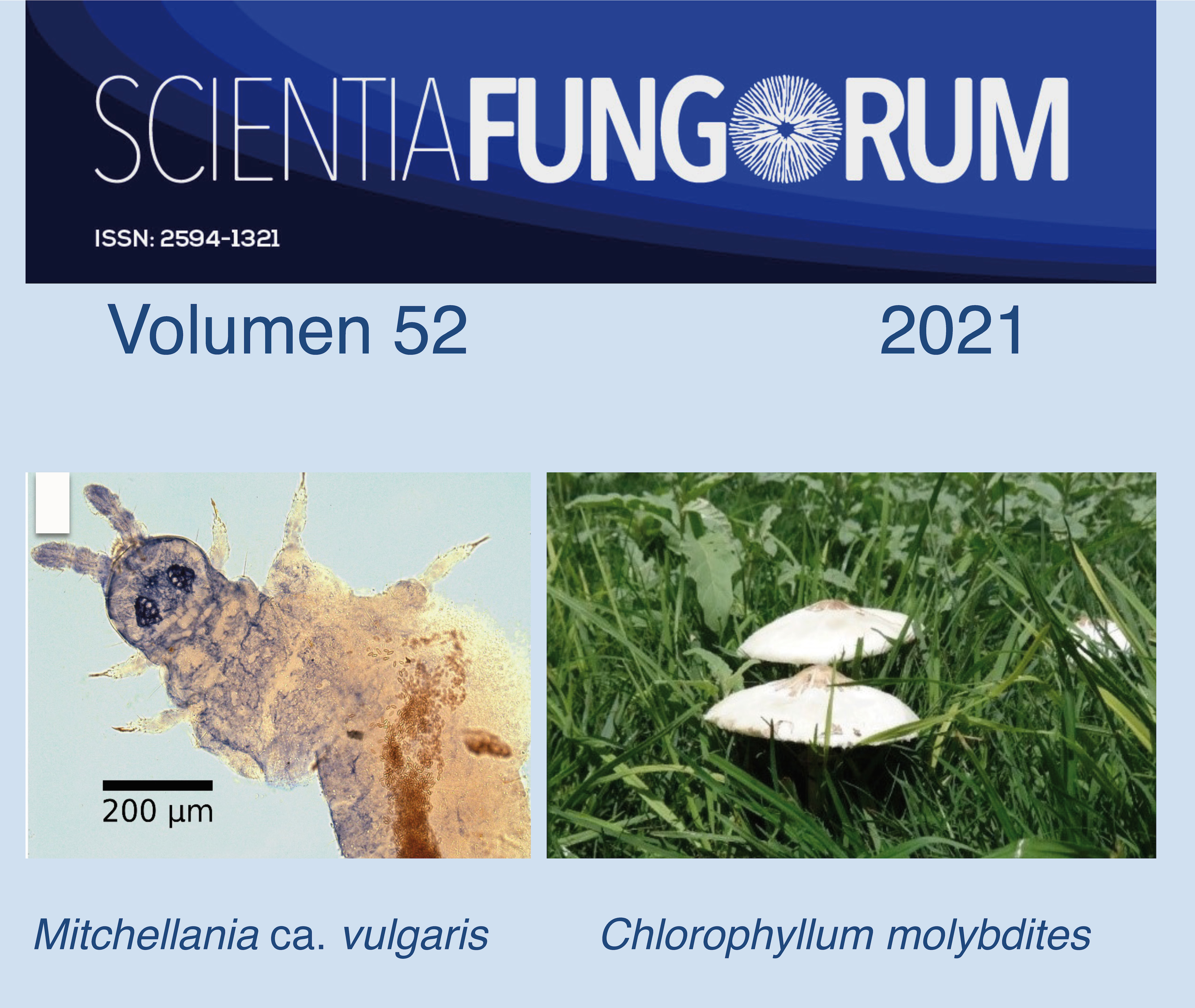Antioxidant activity of wild mushrooms traditionally consumed in central Mexico
DOI:
https://doi.org/10.33885/sf.2021.52.1410Abstract
Background: Wild edible mushrooms represent a valuable food source due to their high content of protein, vitamins, fiber, and low levels of fat. In addition many wild edible mushrooms have bioactive compounds that include phenolic compounds related to antioxidant properties.
Objective: To determine the chemical composition, quantify the content of total phenols and evaluate the antioxidant activity of six species of wild edible mushrooms traditionally consumed in Central Mexico.
Methods: Extracts with water, methanol, hexane and ethyl acetate were obtained from which a preliminary mycochemical test was carried out. Afterwards, the content of total phenolic compounds was quantified by the Folin-Ciocalteu method and finally, the antioxidant activity against the DPPH radical was evaluated.
Results and conclusions: In the different fungal extracts (Amanita rubescens, Flammulina mexicana, Floccularia aff. luteovirens, Gyromitra sp., Morchella sp., Turbinellus floccosus) flavonoids, saponins, tannins, quinones, coumarins and reducing sugars were detected. In aqueous extracts the highest concentration of total phenolic compounds and antioxidant activity was found, while extracts ethyl acetate the lowest. The data obtained is the first report for the study species, contributing to the knowledge of the chemical composition and biological activity of wild mushrooms in Mexico.
Downloads
Downloads
Published
How to Cite
Issue
Section
License
Copyright notice
Open access policy
The authors who publish in this journal accept the following conditions:
In accordance with copyright laws, Scientia Fungorum recognizes and respects the authors’ moral rights, as well as the ownership of property rights, which will be transferred to the journal for dissemination in open access. Scientia Fungorum does not charge for submission and processing of articles for publication.
All the texts published by Scientia Fungorum –with no exception– are distributed under a Creative Commons License Attribution-NonCommercial-ShareAlike 4.0 International (CC BY-NC-SA 4.0), which allows third parties to use the publication as long as the work’s authorship and its first publication in this journal are mentioned.
The authors can enter into independent and additional contractual agreements for the nonexclusive distribution of the version of the article published in Scientia Fungorum (for example include it into an institutional repository or publish it in a book) as long as it is clearly and explicitly indicated that the work was published for the first time in Scientia Fungorum.
For all the above, the authors shall send the form of Letter-transfer of Property Rights for the first publication duly filled in and signed by the author(s). This form must be sent as a complementary file.
This work is licensed under a Creative Commons Attribution-NonCommercial-ShareAlike 4.0 International license (CC-By-NC-SA 4.0).



